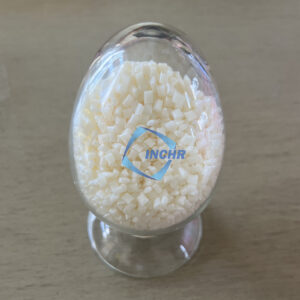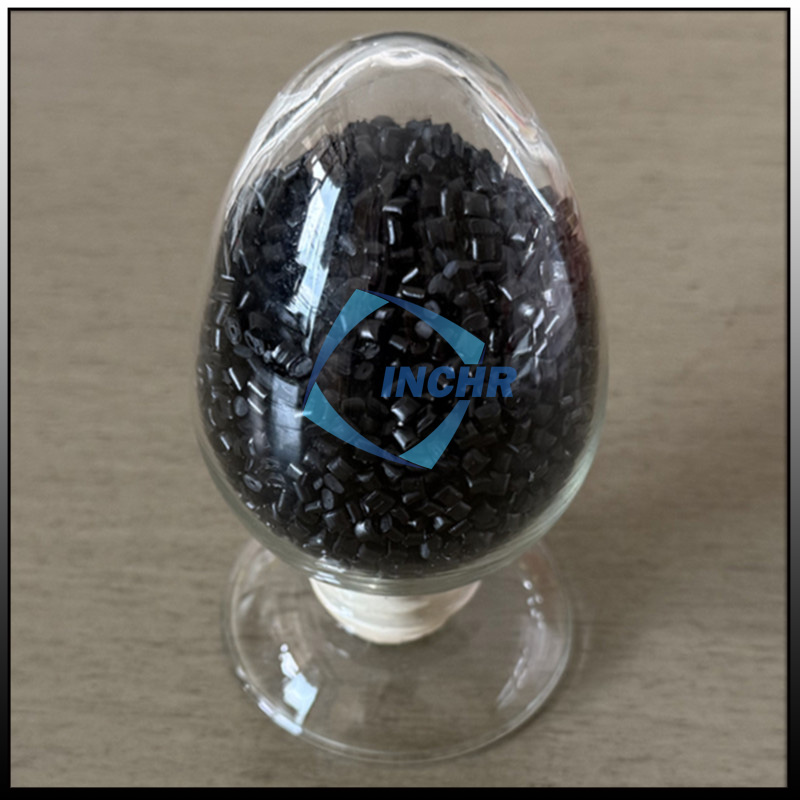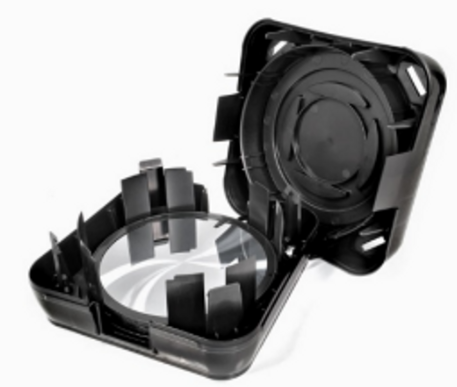Advantages of antistatic ABS compound
INCHR provides various antistatic compounds for static protection, the main base materials are ABS, PC, PP, HDPE, LDPE, HIPS, GPPS, POM, TPE, TPU, PBT, Nylon, PVC, ABS+PC alloy, etc., but antistatic ABS compounds are the best seller in the market.

Good overall performance
Antistatic ABS compounds have high impact strength, are not easily damaged when impacted by external forces, and can maintain the integrity of the product; at the same time, they have good toughness, can maintain shape and performance under different use environments, and have a suitable hardness, which can meet the physical performance requirements of various uses such as shells.
Excellent processing performance
Antistatic ABS compounds can be formed by common plastic processing methods such as injection molding and extrusion and can be efficiently made into products of various complex shapes. The processing process is relatively stable, which can ensure the consistency of product quality.
Stable and permanent antistatic performance
In fields such as electronic appliances that are sensitive to static electricity, it can effectively prevent the generation and accumulation of static electricity and reduce the damage of static electricity to electronic components, which makes it very critical in application scenarios such as electronic product shells.
High cost-effectiveness
Compared with some other special high-performance antistatic materials, antistatic ABS compounds have a lower price, which can meet the requirements of antistatic and basic physical properties while taking into account cost control, making it more advantageous in large-scale production applications.
Mature and stable formula
With the initial introduction of the concept of antistatic compounds, antistatic modification was first attempted to be applied to ABS materials. After improvements in antistatic agents and blending technology, antistatic ABS compounds with mature formulas can be achieved by compounding permanent antistatic agents, compatibilizers, ABS resins, and other additives in different proportions.
Application cases of transparent antistatic ABS in the semiconductor industry
- Chip packaging: Transparent antistatic ABS can be used to make chip packaging boxes for chips. Semiconductor chips are very sensitive to static electricity. During packaging, storage, and transportation, antistatic materials are needed to prevent static electricity from damaging the chips. The transparent property makes it convenient for staff to observe the status of the chip without opening the packaging box, and the antistatic performance can ensure the safety of the chip. For example, some semiconductor packaging companies will use this material to produce chip packaging boxes to meet the packaging needs of semiconductor chips.
- Semiconductor production equipment parts and protective parts: The shells and protective parts of some semiconductor production equipment will also use transparent antistatic ABS compounds. On the one hand, the transparent shell can facilitate operators to observe the internal operation of the equipment and detect abnormalities of the equipment in time; on the other hand, the antistatic performance can prevent static electricity from interfering with and damaging the electronic components inside the equipment, ensuring the normal operation of the equipment.
- Semiconductor detection probes: Various detection probes are used in the detection process of semiconductor chips. Transparent antistatic ABS can be used to make the shell of the detection probe, which can not only ensure the electrical insulation performance of the detection probe but also prevent the influence of static electricity on the detection results. At the same time, the transparent shell makes it convenient for operators to observe the contact between the detection probe and the chip to ensure the accuracy of the detection.
- Optical detection equipment components: Some semiconductor optical detection equipment requires the use of transparent materials to transmit and receive light, and also needs to have antistatic properties. Transparent antistatic ABS can meet these requirements and is used to make lenses, windows, and other components of optical detection equipment to ensure the accuracy and stability of optical detection.

How to Improve the transparency of transparent antistatic ABS?
Accurately control the processing temperature: The appropriate processing temperature can make the antistatic ABS compound better plasticized and mixed evenly. Too high or too low a temperature may cause internal structural defects or decomposition of the material, affecting transparency. For example, when extruding or injection molding, a reasonable temperature curve should be set according to the characteristics of the material.
Optimize mold design: Factors such as the surface finish of the mold and the gate design will affect the transparency of the compound after molding. The high-gloss mold surface can make the product surface smoother and reduce the diffuse reflection of light. The use of a hot runner mold system and reasonable gate position can make the material flow more evenly in the mold, avoiding defects such as streamlines and weld marks that affect transparency.




